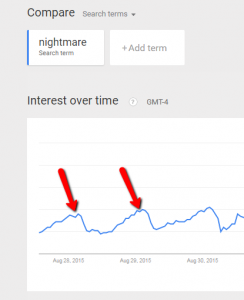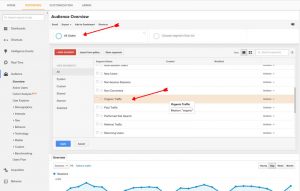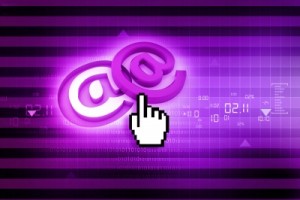A few developers working hard can get a lot done, but it takes a well-rounded team with different skills and roles to build and grow a successful software product and company.
But all too often, we find that our teams or team members are working in silos, not fully understanding what others are doing (or why). With our “What Matters” series, we’ll be digging into the various members of your team to help you understand and work better with them all.

This week, we’re talking to designers to see what matters the most to them. Most people have some idea what designers do, but not all designers are exactly the same — working in tech, you’re likely to run into…
- UX designers, who focus on how the product feels and solving the design problems of the product in a way that’s the most beneficial to the user (with the goal of getting and retaining more users)
- UI designers, who are primarily concerned with how the product looks and with creating each page/screen that a user interacts with so that it matches the user flow the UX designer has created
- Visual/graphic designers are what most people think of when they think of a designer — they focus on creating beautiful icons, controls, and other visual elements, and matching them with appropriate typography
- Interaction/motion designers who design and implement the tiny animations that often take place inside an app (an icon “bouncing” after it’s been touched, for example)
Of course, there are often overlaps between these roles — it’s not uncommon for a UX designer to also do UI work, or for a UI designer to also do front-end development.
So what do designers want most out of their workday? Let’s find out:
Freedom in their process
Matthew Stumm, founder and creative director at Stark/Raving, wishes that more people understood the value of curiosity and following seemingly-random paths during the design process:
“At the core of the design profession is curiosity. The design process is organic which can feel unnerving when collaborating with more linear-thinking professionals. But the combination of linear and organic oftentimes leads to more meaningful solutions.”
Using the language of the “brainswarming” method we’ve discussed before, software engineers are often “bottom-up” thinkers and want to immediately start with concrete solutions to a problem. On the other hand, designers are often perfectly happy being “top-down” thinkers and starting out by discussing the vague big-picture aspects of the problem and related tangents. Both types of thinkers are vital for problem solving — so let your designers run down rabbit holes when they need to, to come up with a solution.
But within reason (because designers need goals & parameters)
Havana Nguyen, a UX designer, finds that freedom is useful only to a point:
“Giving me total creative freedom sounds like a good idea, but it ends up wasting everyone’s time.”
To create a well-designed product, Havana (and other UX designers) needs the following pieces of information:
- A user walkthrough of the product — what prompted the user to choose this app over an alternative? Why are they using the product in the first place? This can guide decisions like whether she should design the product for utility and speed of use, or design it so that the user is likely to stick around and browse.
- Prioritized product goals. As Havana puts it, “I know features A, B, and C are all important, but if you had to put them in a numbered list, how would you do it?” This lets her understand how to fit the features into a visual hierarchy.
- A well-defined target audience and tone, which will help designers create an app that truly stands out from the crowd instead of another “me-too” product
David Langton, president at the Langton Creative Group, agrees, adding,
“We want to know about your industry, the marketing environment and the most pressing issues that are on the minds of your audience. The more we know about the impressions you want to make with key clients and prospects, the better we can devise visual and messaging solutions that will educate, inform and attract people to your brand.”
Get the data
Zack Naylor is now co-founder and CEO at Aurelius, but was a designer for over ten years before that, and what matters to him is user research.
“Everyone understanding the importance of user research is critical to me. Not just the data we collect from research, but the insights that come with that data — what the data actually means.”
Zach notes that this helps remove office politics, emotions, and opinions from the design process, something that Havana also notes.
“If you don’t like something, you should have a reason to justify it, and even better, data to support your reasoning. ‘I don’t like the green because it’s too nature-y’ is very different than ‘I don’t like the green because in our industry, green is often used for X and that’s not an association we want here,’ or ‘Our A/B tests showed green didn’t perform as well as blue in converting site visitors.’”
Cross-disciplinary teams help designers

There’s always value in having design specialists on your team, but it’s also important to get the whole team involved in the design process.
Mike Finch, product designer at SpiderOak, has worked on teams ranging from huge engineering teams to lean startups — and there’s one thing they all have in common; they don’t tend to understand that design is a team sport:
“It’s a collaborative effort that involves multiple players — from your end-users to other disciplines within your organization. Because of that, good design doesn’t come from some genius in a silo. It’s the result of countless cross-discipline huddles, rounds of user feedback, and hours of internal brainstorming. The most successful projects are always the ones where the entire cross-functional team contributes and is emotionally invested in the design that’s being proposed.”
Tarra Anzalone, a UX designer and strategist, agrees:
“If everyone buys into design as a method, then my focus as a UX professional can be focusing on vision and features for the end user, stakeholder management, and gathering/implementing the ideas of the team in a visual way. But when I’m in a position of convincing coworkers we’re on the same team, it slows productivity.”
Want to get your team up to speed on design thinking? IDEO has a free crash-course in design thinking, and Alexa Roman put together a handy UX primer, complete with books to read and influencers to follow.
If you’re a designer, we’d love to hear more about what matters most to you!
This post was originally published at the Clubhouse blog.
Digital & Social Articles on Business 2 Community(83)
Report Post





